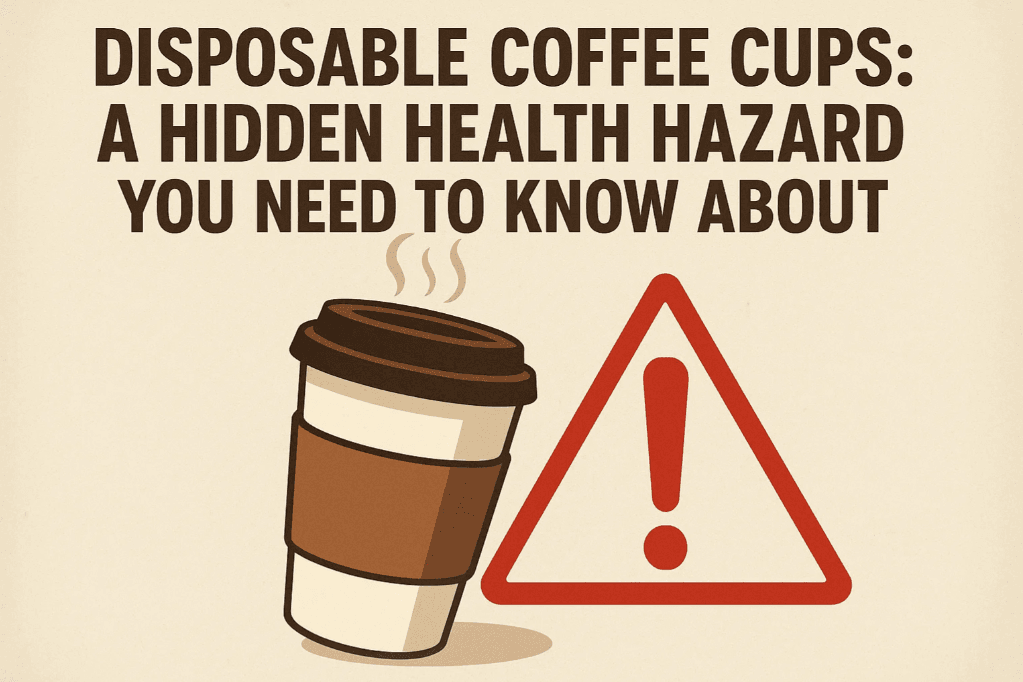Disposable coffee cups have become an essential part of modern life. From early morning office runs to cozy café hangouts, they offer convenience, mobility, and accessibility to millions of coffee lovers worldwide. But beneath their simple exterior lies a growing health concern that could be silently harming you.
The Plastic Secret of Disposable Coffee Cups
Contrary to popular belief, disposable coffee cups aren’t made entirely of paper. If they were, your hot beverage would leak out before you took your first sip. Instead, they are lined with a thin layer of plastic, typically polyethylene, to make them waterproof.
This plastic lining is where the problem begins.
Hot Beverages and Chemical Leaching
When hot liquid comes into contact with the plastic lining inside disposable coffee cups, it can cause the lining to degrade and release harmful chemicals into your drink. Studies have shown that compounds such as fluoride, sulfate, and nitrate can leach into the liquid within minutes of contact with heat.
Worse still, these chemicals are not just inconvenient. They have been associated with long-term health effects including hormonal imbalance, reduced fertility, metabolic dysfunction, and potential carcinogenic properties.
Microplastics in Your Morning Brew
A 2020 study published in the journal Environmental Science & Technology found that disposable coffee cups can shed over 25,000 microscopic plastic particles into hot beverages. These microplastics are invisible to the naked eye, yet they travel silently from the cup to your digestive system.
It’s estimated that humans consume about a credit card worth of plastic every week through various sources, and these cups are one of the contributors.
Toxic Heavy Metals in Disposable Coffee Cups
To make matters worse, researchers have discovered the presence of toxic heavy metals such as:
- Lead
- Cadmium
- Chromium
These metals can leach from both the plastic lining and the inks or dyes used for branding and decoration. Over time, chronic exposure to these metals may result in severe health risks such as:
- Kidney damage
- Nervous system disorders
- Hormonal disruption
- Cancer
The Environmental Cost
Besides the personal health risks, disposable coffee cups are also an environmental disaster. Due to the mixed material (paper and plastic), they are difficult to recycle. Most end up in landfills or oceans, where they break down into microplastics that enter marine food chains.

What You Can Do to Stay Safe
The best way to reduce your exposure to harmful chemicals from disposable coffee cups is by making a few conscious lifestyle changes:
1. Use a Reusable Cup
Invest in a stainless steel or glass travel mug. These materials are free from harmful leaching and keep your coffee hotter for longer.
2. Say No to Plastic-Lined Cups
Some eco-friendly cafes offer biodegradable or compostable cups made from PLA (polylactic acid), a plant-based material. Still, be cautious, as PLA also breaks down under heat.
3. Drink In, Not Out
Whenever possible, enjoy your coffee in a ceramic mug at the café instead of opting for a takeaway cup.
4. Check the Labels
If you’re unsure whether your favorite café uses safe materials, ask. Transparency is increasing, and responsible businesses will gladly share information about their practices.
5. Spread Awareness
Share the knowledge with friends, family, and colleagues. Awareness can drive collective change and encourage businesses to adopt safer practices.
Final Thoughts
Disposable coffee cups may seem harmless, but they’re a potential health risk hiding in plain sight. From leaching plastic chemicals and heavy metals to contributing to our microplastic intake, their impact is too significant to ignore.
Convenience should never come at the cost of your well-being. Take control of your health by making informed choices. The next time you reach for that to-go cup, remember: What you ingest matters.
Read this : https://kolhapurdistrict.in/category/health/
Read This : https://sanglidistrict.in/health/
Read This : https://sataradistrict.in/health/
🌐 The Power of Our District PR Ecosystem
We are not just a media agency—we are building an entire district-level digital infrastructure with:
Each site provides:
- SEO blog space
- Video PR hosting
- Local business features
- Event coverage
- News updates

